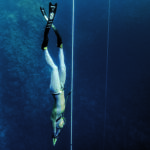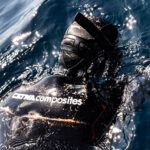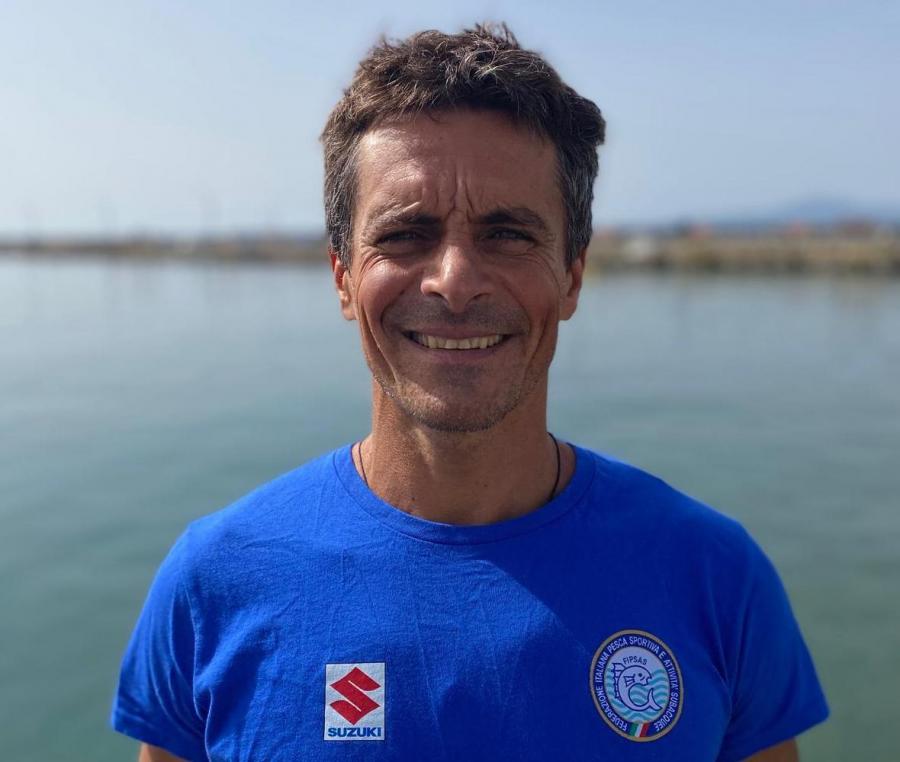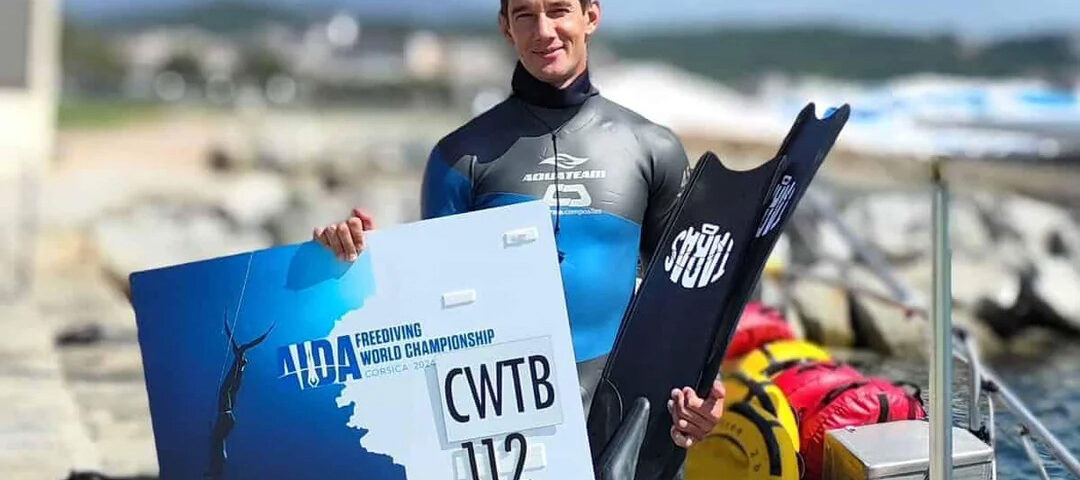More and More Records, But Now What?

CMAS World Championship: Highlights and Results
18 September 2025
Cetma Composites: Black Camu Wetsuit
7 October 2025The recent CMAS World Championship in Greece has sparked controversy, with several athletes withdrawing from competition due to what they claim were inadequate procedures for dealing with Taravana
Filippo Carletti
We’ve long known that competitive freediving carries its risks, but what happened at the recent World Championships in Greece has sent a shockwave through the entire community. Following the incidents involving Davide Carrera and, more notably, Andrey Matveenko, several athletes have announced their withdrawal from CMAS competitions.
Here are some of their statements:
Talya Davidoff, USA: “The safety protocols at the World Freediving Championship are simply inadequate.”
Petar Klovar, Croatia: “A life was destroyed due to incompetence; I will not be part of this madness.”
Zsofia Torocsik, Hungary: “My silence is intentional, my absence deliberate.”
Others, such as Vitomir Maricic and Sanda Delija from Croatia, reportedly announced their retirement as well, according to Deeper Blue magazine.
From various social media posts, it appears the main issue is the lack of adequate support for the freedivers competing. Specifically, assistance for decompression sickness (DCS) appears to be insufficient, and this is believed to have led to serious consequences for Russian athlete Matveenko.
On the other hand, coaches and athletes who did take part in the championship responded strongly and firmly. We spoke with Carlo Altomonte, who offered insights into several aspects.
“The number one issue is definitely safety and organization. In the end, the competitions were held, and in-water safety was excellent (for example, the recovery of the French athlete at over 40 meters), but DCS procedures need a complete overhaul. Starting with athletes who have a history of such symptoms (including Matveenko and Davide). CMAS needs to initiate a serious discussion on this, just as it did after the first deep-water blackout (BO) in Roatan, which led to the introduction of scooters and what’s now called ‘deep assistance.’”
He continued regarding the organizational side:
“The management of training before and during the competition was not optimal (for example, no training sessions were allowed once the World Championship began—only competition dives). This penalized athletes like Vincenzo Ferri, who competed on the first day (CWT) and the second-to-last (CWTBF), with a full week without proper adaptation. These procedures also need to be reviewed.”
In short, this is a delicate situation. The multiple withdrawals from this World Championship—an unprecedented event—have made a lot of noise and are likely to spark a deep and wide-ranging reflection within the entire discipline.
And just as we were about to publish this piece, the response from CMAS arrived, which we now share with you.
"During the official training on September 6, athlete Andrey Matveenko declared a dive to 126 meters in the CWT discipline with a target time of 3:50. This declaration was in line with his previously known performances outside the official program: on 04/09, 123 meters CWT; and on 02/09, 110 meters FIM. There was no reason to limit his official declaration, as the safety officer did with other athletes whose dives were considered risky.
"The dive line was set according to the declared depth, confirmed by the athlete’s depth gauge. Andrey completed the dive to 126 meters within the declared time. During the ascent, he was met at 50 meters by the scout safety diver, at 35 meters by the first safety diver, and at 25 meters by the second, who escorted him to the surface. At about 15 meters, Andrey lost consciousness. He was immediately secured by the safety team and brought to the surface. He was then handed over to the medical team on site, who provided the necessary care, in full accordance with medical protocols and Greek laws, and transported to shore.
"From there, Andrey was transferred by ambulance to the public hospital in Lefkada, then to the emergency neurological clinic of the public Thriassio hospital in Athens, before being admitted to the Naval Military Hospital, where he is still hospitalized and undergoing treatment. He is currently receiving treatment in a hyperbaric chamber and is being monitored by the neurological clinic.
"We remain in contact with the doctors to receive official updates on Andrey’s health status. Our thoughts are with him and his loved ones, and we wish him a swift and complete recovery."
Was the evacuation carried out according to the official safety protocol?
"Yes, the evacuation was carried out according to the official safety protocol."
What are the details of the decompression illness incident involving Davide Carrera and his subsequent withdrawal?
"After successfully completing his performance, Davide went to the Deco O2 station to follow the usual decompression protocol after deep dives. As he was about to exceed the maximum allowed underwater time, the medical team was immediately alerted and Davide was escorted to the surface by the safety officer supervising him.
After reporting symptoms of decompression sickness, Davide and the medical team decided that he would not participate in this competition. This was not a withdrawal but a joint decision made for the athlete’s safety."
How does CMAS respond to reports that safety officer Roberto Butera suffered from decompression-related symptoms during the event?
"Roberto Butera, as safety officer, had already taken the appropriate measures by undergoing a PFO test before engaging in any diving activity. During the competition, he operated according to the implemented safety plan, following the safety rotation. After experiencing some symptoms related to decompression sickness, he went to a clinic in Athens. He is now in good health and is not diving."
The official safety protocol called for transfer to a hyperbaric chamber within 2h45 to 3h20. Why wasn’t a helicopter used in Matveenko’s case, and what is CMAS’s explanation for these delays?
"From the moment the athlete is transferred to the hospital for an incident, their treatment is solely the responsibility of doctors, medical science rules, and the regulations of the national health system.
The local organizing committee and CMAS fully complied with the established safety protocol until the athlete was handed over to the Greek national system. Therefore, the decision to transport someone by ambulance or helicopter, and the timing of such transport, lies with the medical personnel managing the incident."
Were local hospitals and hyperbaric chambers officially informed and prepared to receive DCS/CAGE cases related to freediving before the event began?
"As the international federation, CMAS entrusts the organization of competitions to local organizing committees, responsible for applying CMAS procedures and obligations in accordance with national laws and regulations.
In this case, during competition preparations, the local organizing committee presented CMAS with the evacuation plan, which included the use of a helicopter. CMAS deemed this plan appropriate and approved it. CMAS naturally expects the local organizing committee to fully adhere to it, in collaboration with local authorities and agencies, and in compliance with the required standards for authorizations, permits, and licenses, including safety plans and the deployment of safety equipment and personnel."
Was in-water recompression (IWR) part of the approved and planned medical protocol, or was it an improvised measure?
"In accordance with CMAS and Hellenic state regulations, decompression is available during training and competition for divers going deeper than 70 meters, at a depth of 5 meters for 5 minutes using pure O2. The system allows simultaneous decompression of two athletes, with a third rescue station."
How many dives per day were safety divers performing, and what monitoring or decompression procedures were in place for them?
"We have two teams of safety divers per line. Each covers a maximum of 20 competition dives per day. There are two safety scouts per line, alternating to ensure a surface rest time between 16 and 20 minutes. Safety divers breathe oxygen for decompression at the end of each day for 5 minutes at a depth of 5 meters."
Has CMAS investigated reports of other safety divers experiencing symptoms during the event?
"No other cases have been reported."
The investigation into the championship highlighted safety and medical response as the weakest areas, with explicit recommendations for improvement. Which of these were implemented in 2025 and which were not?
"The 2024 recommendations regarding competition organization were taken into account as much as possible for this year’s event. We are grateful to the athletes for their cooperation in this valuable investigation and for submitting their comments, as well as to Simona Auteri for overseeing the investigation and doing an excellent job. We received several proposals and observations on how to make the competition safer and more enjoyable and continue to review these under the leadership of the new CMAS Apnea Commission Director, Ekaterina Senichkina.
As for specific issues related to safety and medical response highlighted in the investigation — namely, managing decompression sickness symptoms and the availability of portable chambers — it should be noted that these matters are not easy to resolve, as they largely depend on the laws and regulations of each host country.
Regarding safety management within the competition, the team is fully operational and performing excellently (for example, a remarkable deep rescue at 42 meters was carried out on the first day of the competition by safety officer Roberto Butera). Furthermore, the safety team has decided to perform medical checks even on athletes doing white card dives, in cases of evident or suspected barotrauma."
Why hasn’t CMAS leadership (including the president or organizer) issued official public statements regarding these incidents and withdrawals?
"This statement is inaccurate. In fact, CMAS leadership (including President Arzhanova, present in Mytikas from September 8) was available on site to answer all questions from athletes, officials, and team leaders. Meetings were regularly held in Mytikas with athletes and/or team leaders to share updates and hear concerns.
We recognize and appreciate the role of the media and never refuse to provide clarification about any incident. However, as an international sports institution, CMAS is reluctant to make “hot” comments before having detailed knowledge of what actually occurred, in order to take an official stance. Nevertheless, CMAS always prioritizes the welfare of the athletes, teams, and officials involved in any incident and collaborates as much as possible to ensure a positive resolution. At the same time, our staff reviews the case, conducts an investigation, and then submits a detailed report to CMAS to take the necessary measures.
One final comment regarding our relationship with the media. We were surprised to read that we did not respond to DeeperBlue’s questions. In reality, the opposite is true, and we have many emails proving this. DeeperBlue contacted us, and we were fully willing to answer all their questions, which we did. Unfortunately, it was DeeperBlue that chose not to publish our responses."
Does CMAS acknowledge that the lack of timely communication contributed to a loss of trust among athletes?
"This question should be considered in context. As explained, we take our institutional role with athletes, teams, and officials (especially the on-site safety team) very seriously and need to be fully informed before making any public statements."
Why were new liability and indemnity waivers introduced during the competition, and why were athletes asked to sign them on the boat just before diving?
"The liability and indemnity waivers are part of the registration forms that were presented to athletes and national federations (posted on the CMAS competition webpage on May 31, 2025) as a mandatory condition for all athlete registrations.
Several athletes had not submitted the signed document on time, so the LOC asked them to sign it on site during the competition. This document is part of the informed consent process that is required in many circumstances, including medical treatment in daily life."
Can CMAS clarify whether the signatures obtained under these conditions are legally binding?
"Several courts have confirmed that they are."
A revised safety protocol was issued on September 11. Why was such an important document introduced midway through the championship rather than before the event began?
"The document dated September 11 pertains to the safety plan that has been in place since the beginning of the championship. It was reissued and disseminated to confirm existing procedures. This is a standard recall procedure."
How does CMAS respond to the withdrawal or departure of high-level athletes from CMAS competitions, including Petar Klovar, Davide Carrera, Talya Davidoff, Zsófia Törőcsik, and others, citing safety concerns?
"We confirm that we received an official communication from Petar Klovar requesting withdrawal from all future CMAS competitions and the out-of-competition anti-doping monitoring program (ADAMS) as soon as possible. We do not comment on his personal justifications but sincerely hope that the sanctions imposed after the Bahamas incident a few years ago have nothing to do with his decision.
However, we would like to clarify that the entire Croatian senior team (Vitomir Maricic, Peter Klovar, and Sanda Delija) did not withdraw from this competition, as none of them finalized their championship registration or paid the required fees by the deadline (September 5, 2025).
Regarding Zsofia Torocsik, we confirm that she officially withdrew from the competition. Talya Davidoff also officially requested her withdrawal from the championship and from all future CMAS competitions, as well as from the ADAMS anti-doping program.
Regarding her public withdrawal statement, in which she announced her intention to disclose how CMAS treated her regarding her health, we note that the only request received from the athlete concerned the establishment of a TUE for benzodiazepines. We would like to highlight that CMAS safety regulations strictly prohibit the use of benzodiazepines in freediving.
As for Davide Carrera, as described above, this was not a withdrawal but a mutual decision made for the athlete’s safety. We appreciate his long-standing contribution to freediving and his efforts in researching new global medical protocols for freedivers. We hope to continue working with him in this direction in the future."
What immediate measures will CMAS take to restore trust among athletes and national federations?
"This is not just a key moment for freediving but a true turning point. As our sport evolves and divers reach depths once deemed impossible, the responsibility to guide this progression safely and ethically has never been greater.
Around the world, freedivers and doctors are already contributing to valuable research and publications. What our community needs now is action: to establish an official medical protocol — similar to those long recognized in scuba diving — and to have it officially recognized by the international medical community.
A protocol that protects athletes and sets clear standards for treating CAGE and DCS in freediving. Without this, the future of our sport remains vulnerable.
It is now up to CMAS, the only official governing body for underwater sports, to carry out this mission. The CMAS Medical and Scientific Commission for Freediving, under the leadership of its new director, Radoslaw Gaca, invites researchers, doctors, and athletes worldwide to pool their knowledge and experiences.
Together, we can achieve what has long been missing: the recognition and implementation of international medical protocols for freediving within the global medical community.
The establishment and recognition of an official medical protocol is a crucial milestone. This protocol will allow us to protect lives, honor the athletes who push human limits, and ensure that freediving grows not only in depth but in safety, respect, and unity."
Source: scubadiving.news.it



